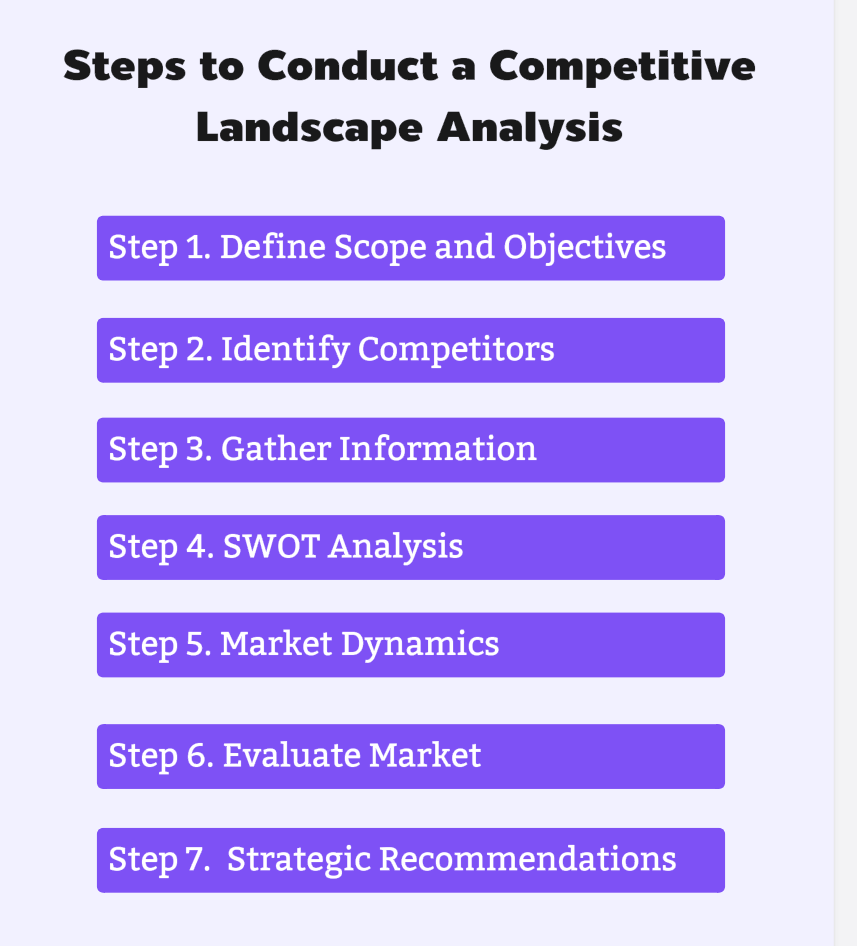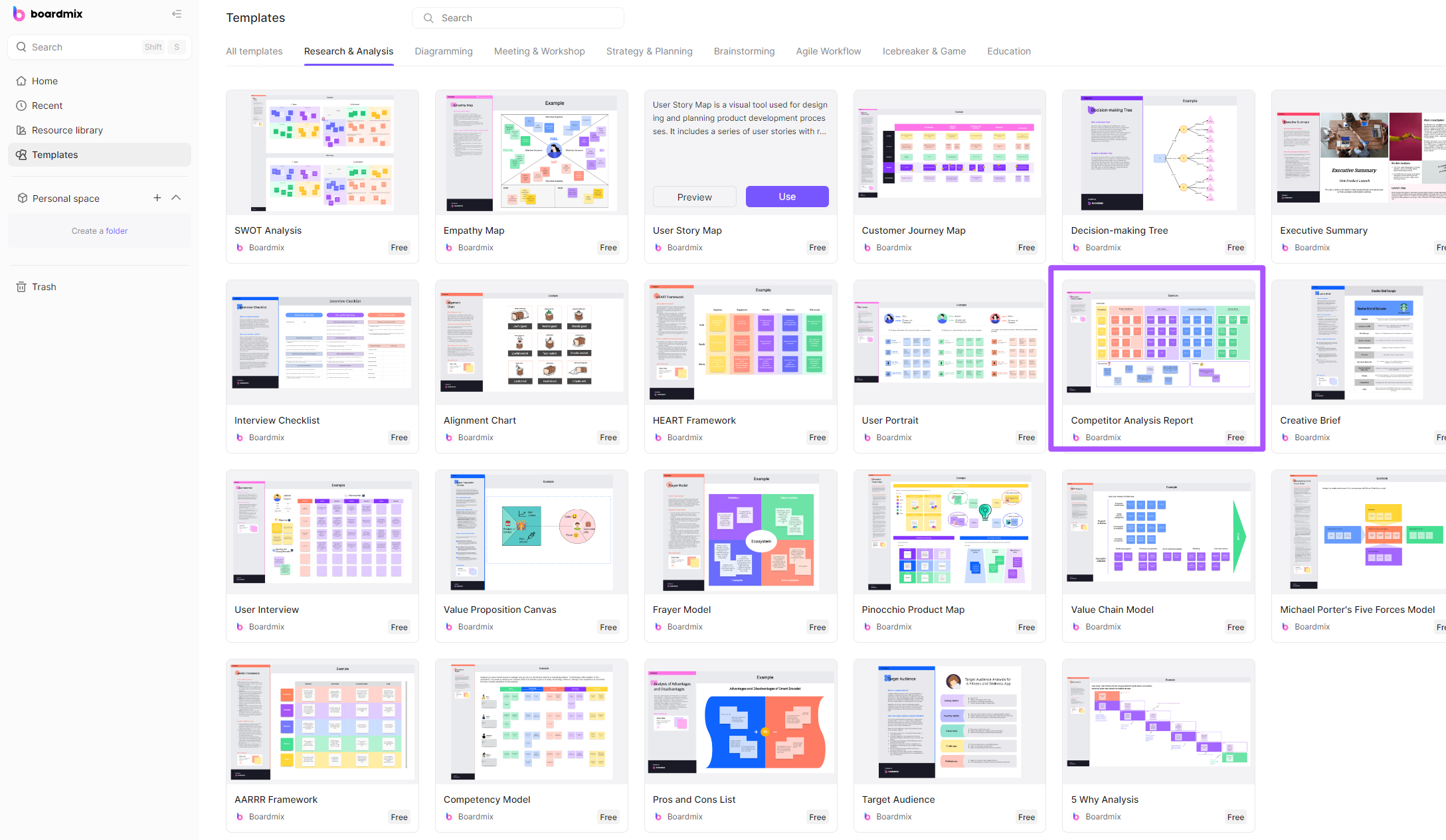In today's fast-paced business environment, staying ahead of the competition is crucial for the success and sustainability of any company. One powerful tool that organizations use to gain a strategic advantage is competitive landscape analysis. This process involves evaluating and understanding the dynamics of the market in which a company operates, identifying key competitors, and assessing their strengths and weaknesses. In this article, we will delve into the importance of competitive landscape analysis and how businesses can effectively leverage this tool for strategic decision-making.
Part 1. What Is Competitive Landscape Analysis?
Competitive landscape analysis is a strategic business process that involves a comprehensive examination and evaluation of the overall competitive environment in which a company operates. This analysis extends beyond individual competitors to encompass the broader market, industry trends, and various external factors that can influence the competitive dynamics. The purpose of a competitive landscape analysis is to provide a holistic view of the competitive forces shaping an industry, enabling businesses to make informed decisions and formulate effective strategies.
Part 2. The Significance of Competitive Landscape Analysis
Competitive landscape analysis is akin to a strategic roadmap that helps businesses navigate the complexities of the market. By comprehensively evaluating the competitive environment, companies can identify opportunities, mitigate risks, and make informed decisions. Here are some key reasons why competitive landscape analysis is crucial:
- Market Positioning: Understanding where a company stands relative to its competitors is fundamental. Through analysis, businesses can identify their unique value propositions, strengths, and areas for improvement.
- Identification of Competitors: Pinpointing direct and indirect competitors is essential for any business. A thorough analysis reveals not only who the competitors are but also their market share, strategies, and potential threats.
- Customer Insights: By studying the competition, companies can gain valuable insights into customer preferences, needs, and behaviors. This knowledge helps in tailoring products and services to meet customer expectations effectively.
- Strategic Decision Making: Competitive landscape analysis guides strategic decision-making processes. Whether it's entering new markets, launching new products, or adjusting pricing strategies, a solid understanding of the competitive environment is crucial.
Part 3. Steps to Conduct a Competitive Landscape Analysis
Conducting a competitive landscape analysis involves a systematic approach to gather and analyze relevant information about the market, industry, and competitors. Here are the steps to conduct a comprehensive competitive landscape analysis:
Step 1. Define Scope and Objectives
Begin by clearly defining the scope of your competitive landscape analysis. Outline the specific market or industry segment you intend to assess and articulate the objectives of your analysis to guide the process effectively.
Step 2. Identify Competitors
Identify and list both direct and indirect competitors operating in the chosen market or industry. Understanding who your competitors are is a fundamental step in evaluating the competitive landscape.
Step 3. Gather Information
Systematically collect crucial data about competitors, including financials, product portfolios, pricing strategies, and customer feedback. This step lays the foundation for a comprehensive understanding of the competitive environment.
Step 4. SWOT Analysis
Conduct a detailed SWOT analysis for each identified competitor. This involves assessing their internal strengths and weaknesses, as well as external opportunities and threats. The SWOT framework helps distill key insights into competitors' positions in the market.
Step 5. Market Dynamics
Delve into the dynamic aspects of the market by exploring trends, growth factors, and gaining insights into customer behaviors. Understanding the market dynamics enhances your ability to anticipate changes and make informed strategic decisions.
Step 6. Evaluate Market
Evaluate the overall market, considering aspects such as size, distribution channels, and technological trends. This step provides context for understanding how competitors operate within the broader market landscape.
Step 7. Strategic Recommendations
Based on the insights gained from the analysis, formulate strategic recommendations. These recommendations should align with the identified opportunities and challenges, providing a clear roadmap for decision-making and competitive positioning.
Part 4. How Boardmix Helps You in Competitive Landscape Analysis?
Boardmix is a powerful online whiteboard solution designed to revolutionize competitive landscape analysis. With an array of intuitive drawing templates, Boardmix allows users to visualize and strategize their market position effectively. Unlike traditional tools, it simplifies complex data into digestible visuals, enabling businesses to gain insights and make informed decisions. Moreover, Boardmix is equipped with a robust AI assistant that help you complete the competitive landscape analysis easier.
Here some more key features of Boardmix:
- Easy-to-use drawing tools for creating diagrams and flowcharts;
- A vast library of pre-designed templates for various business scenarios;
- Real-time collaboration allowing multiple users to work on the same board simultaneously; Seamless integration with popular file formats for easy import/export;
- Advanced security measures to protect your data;
- An interactive presentation mode for effective communication of ideas; and
- A flexible workspace that can be customized according to user needs.
FAQs about Competitive Landscape Analysis
1. How do you illustrate a competitive landscape?
Illustrating a competitive landscape involves visually representing key elements of the market and the positioning of various competitors. Here are several ways to effectively illustrate a competitive landscape: Competitor Matrix, SWOT Analysis Diagram, Positioning Map, Spider Charts (Radar Charts), Bubble Charts, Heat Maps, Porter's Five Forces Analysis, Timeline Infographics, Customer Journey Maps, Word Clouds.
Choose the visualization method that best fits your analysis objectives and audience. Combining multiple visualizations can offer a more comprehensive and nuanced understanding of the competitive landscape.
2. What is the competitive landscape type?
Competitive landscape types can vary widely based on factors such as market structure, product differentiation, and competitive strategies. Here are some common types of competitive landscape: Monopoly: Monopolistic Competition; Perfect Competition: Niche Market: Emerging Competition: Global Competition: Price-based Competition: Innovative Competition: Commodity Market:
3. What is competitive environment analysis?
Competitive environment analysis is a systematic process of evaluating and understanding the external factors and competitive forces that shape and influence a company's operating environment. This analysis is crucial for businesses seeking to gain insights into the dynamics of the market, identify competitors, assess industry trends, and make informed strategic decisions. The competitive environment encompasses various elements, and the analysis typically involves assessing factors both within and outside the company's control.
4. What does competitive business landscape mean?
The term "competitive business landscape" refers to the overall environment in which companies operate and compete. It encompasses a variety of factors and conditions that influence how businesses interact with each other and respond to market dynamics. Understanding the competitive business landscape is crucial for organizations seeking to thrive and succeed in their respective industries.
Conclusion
In a business landscape characterized by constant change, competitive landscape analysis is not a one-time task but an ongoing process. Regularly revisiting and updating the analysis ensures that companies remain agile, responsive, and well-positioned in the market. By leveraging the insights gained through competitive landscape analysis, businesses can make informed decisions that propel them ahead of the competition, fostering long-term success and growth.
And with Boardmix’s powerful AI assistant and various pre-set templates, you will handle the competitive landscape analysis more easily than before. So, give it a try right now!








